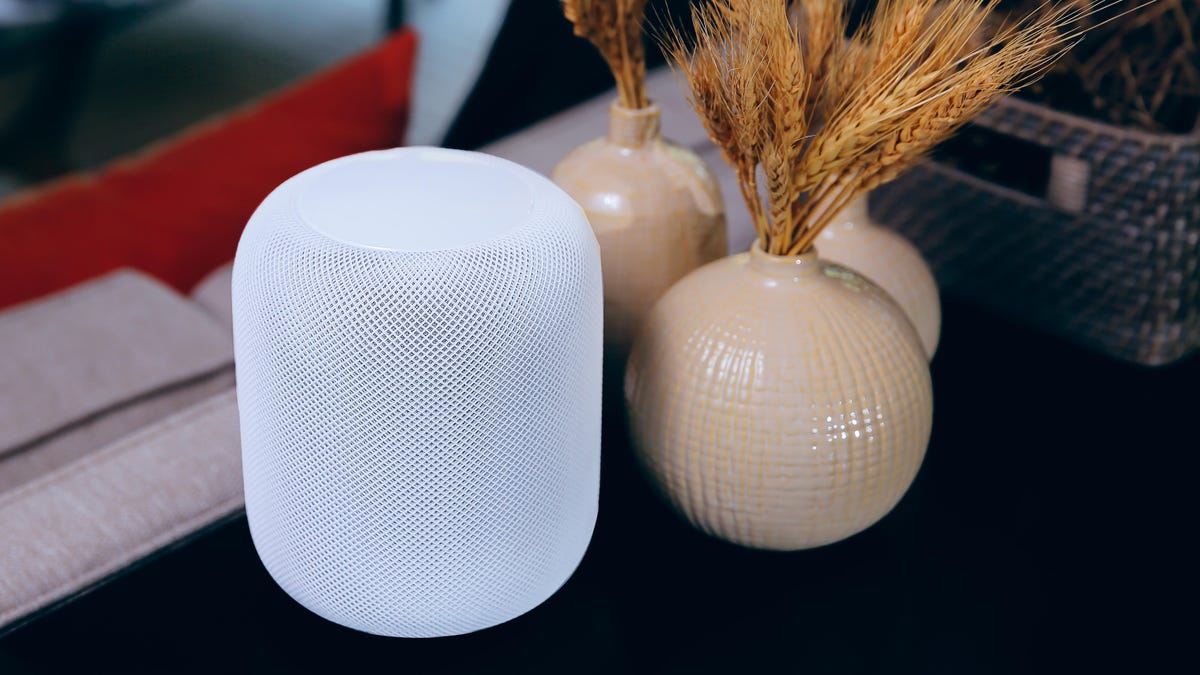Apple's HomePod can recognize your voice. Here's how to set it up
"Hey, Siri, who am I?" Is now something you can ask your HomePod.

Apple's multiuser support for the HomePod is a huge update.
Update, Nov. 12, 2020: Read our HomePod Mini review.
Apple released iOS 13.2 earlier this week, and alongside it, an update to the HomePod. Well, actually there were two HomePod updates this week. The first update, 13.2, was bricking some users' HomePods, so Apple quickly pulled it. Then on Wednesday, it released 13.2.1, fixing the issue and adding new features to the smart speaker.
One of the biggest new features is multiuser support. Now the HomePod can recognize the voices of anyone you share your Home devices with and perform tasks like send messages from them or play tunes from their Apple Music library (previously, whoever set up the HomePod was the main user, and therefore their Apple Music account was used by default).
Here's what you need to do to set up voice recognition.
Update your HomePod!
First things first: Your HomePod needs to have software version 13.2.1 installed. To make sure your HomePod is updated, open the Home app on one of your Apple devices, and tap the Home button in the top-left corner. Next, tap Software Update to check for an update. If one is available, install it. It should take about 10 minutes to complete.
If the option to update your HomePod's software is grayed out, the person who set up the HomePod will have to complete the software update or grant your account permission to edit and make changes.
Turning on voice recognition should be an easy process.
Turn on voice recognition
To turn on your HomePod's voice recognition feature, open the Home app on one of your Apple devices. You should see a prompt at the top of the screen of the Home tab asking if you want to set up the new feature. Tap on it and follow the instructions.
If you don't see the prompt, tap on the Home icon in the top-left corner, then tap on your profile avatar and turn on Recognize My Voice. Approve any prompts and opt into personalization (that's what allows you to send messages, check your agenda, and more).
As long as you've set up Hey, Siri functionality on your iPhone, your HomePod will automatically use that same information to learn your voice. You don't have to go through another teaching session. Give the changes a few minutes to sync to your HomePod, and then say "Hey, Siri, who am I?" If it's set up properly, Siri should identify you. Have each person with whom you've shared your Home devices follow the same prompts for their voice to be recognized.
If everything is working properly, you should be able to turn on voice recognition in just a couple of minutes. If you run into problems, well, keep reading.
You might have to go nucelar and reset your HomePod.
Troubleshooting setup
I ran into issues. A lot of them.
I went through all of the steps I just outlined, and yet, the HomePod refused to recognize my voice. I checked by asking Siri to identify me, to which she replied by telling me she had no idea who I was, and instructing to turn on voice recognition on the Home app. I spent a couple of hours trying everything I could think of, short of factory resetting the HomePod.
I made sure the HomePod's language was set to the same language as my iPhone (for some reason, it kept forgetting this setting), and I toggled the feature on and off multiple times. I re-registered my voice with Hey, Siri on my iPhone -- none of it worked.
Ultimately, I took to Twitter to see if anyone was successful in getting this feature to work. The answer? Remove all other family members from the Home app, and factory reset the HomePod. It wasn't as big of a hassle as I thought it would be, and it worked.
Resetting your HomePod doesn't take that long.
Reset your HomePod in the Home app by long-pressing on the HomePod's tile, tapping on the Settings gear, scrolling to the bottom and tapping on Reset HomePod > Remove Accessory. I also removed my wife's account from the Home app.
Once the HomePod was reset, I set it up again, went through the steps to turn on voice recognition and it started working almost instantly. I then reinvited my wife to share our Home devices, and she was able to turn on voice recognition.
With both of us standing next to the HomePod, we were able to use Siri to check and send messages, play different songs from our respective Apple Music accounts, all with Siri properly identifying us and using the proper accounts.
Apple also added a ton of new features to the iPhone and iPad with the release of iOS 13, make sure to check out our complete guide, and all of the hidden features we've found.

